Reading Time: 5 minutesMany thanks to all our educators and education leaders who are doing everything you can to help your students during the COVID-19 pandemic. We are pleased that equity is a primary consideration as K-12 systems across the country are pivoting to provide learning opportunities, food, and social connections to support students and their families during this crisis.
While many aspects of educational equity seem self-evident among the considerations that schools and school personnel are weighing, we have been asked many times,
How do we keep racial equity front of mind?
We will be offering a series of blog posts about equity considerations during this pandemic. What we offer here, in our first post on the subject, is what we consider to be the most important consideration when it comes to racial equity:
Do everything you can to avoid conflating race, poverty, and trauma.
Given the speed by which big decisions are being made in conditions of tremendous uncertainty, we ALL are going to be making assumptions about who is most vulnerable right now. This is inevitable. What research tells us about implicit bias is that our assumptions are informed by and they reinforce bias.
Those of us motivated to overcome bias in our everyday lives will want to regularly ask ourselves — whether reflecting on our own thinking, the decisions we are making, or the ways we are communicating — several questions:
- “What assumptions am I making about my students of color?”
For example, consider that the upper middle class white student whose single parent is not handling the stress of the economic downturn may struggle to focus on school work, while the black student who has both parents working from home may be energized by new ideas they are encountering while following the curriculum their parents put together during the school closures.
- “How do I know how my decisions will impact students of color?”
What evidence do I have that my students of color need something or can’t do something or will struggle with something? Who am I relying on for current information about my students? There is tremendous diversity among students of color and just because we think we know the family situation of one student does not mean we know it for all students. It is better to be modest and to recognize we have to make decisions with limited information.
- “How can I ensure I am not reinforcing stereotypes and implicit biases about my students and their families in the ways I communicate about my decisions and actions?”
One of the most insidious problems with race in America is that we do not have to explicitly announce the race of students and their families when we are talking about helping marginalized community members for the message to trigger and reinforce implicit racial biases. It can be helpful to identify who the community LIKELY will assume a solution is targeted to and to be very careful in public communications that we do not reinforce these assumptions about who is at risk. Offer counterstories as much as possible. This helps us just as much as it helps our communities.
We absolutely must be prepared to support the students who are the most vulnerable and who will suffer during this pandemic. However, the national narratives about race and poverty in America feed assumptions that our vulnerable students are universally black or that our students in poverty are universally in harm’s way. These tendencies to lump students into categories will seep out in surprising ways among well-meaning educators and education leaders. While the correlation between poverty and race is too steep, it is not perfect. There are many people of color who are not poor; the conflation of the two is seriously problematic.
Similarly, many in the middle class in the US tend to think that students in poverty are universally facing trauma in their homes and communities. However, the original research on adverse childhood experiences (ACEs) did not indicate a difference in the prevalence of ACEs by family income. Thousands of students in poverty are highly motivated, work hard, and want to succeed in mainstream society. Thousands are in family units where a parent is home with them all of the time. Thousands have families keeping them intellectually stimulated during the school closures–often in more productive ways than working parents of wealthier students.
Absolutely, we need to think about systemic and personal challenges our students and their families will face during these unprecedented school closures. It helps to recognize, however, that we are very likely to fall into various “equity traps” in the assumptions we make regarding vulnerability.
Some things we might do to avoid these traps:
- Talk openly about who we assume is likely to suffer and who might thrive in this time away from school. Ideally, have these conversations with a small team of colleagues and/or partners able to provide honest feedback to you and to others. Name race, poverty, and gender as we are talking about it seems a solution is targeted to. Do everything we can to problematize assumptions that inevitably will accompany our conversations and planning. Use that information to ensure we are solving real problems and that we are supporting EVERYONE who may face those problems, not just the ones we are conditioned to think about.
- Be very careful in our public communications not to reinforce biased ideas about who is at risk. Actively provide counterstories when we are thinking and communicating about these topics. Seek out real examples of families of color who are leading the way and actively imagine others. (Research tells us that even just imagining counterstereotypes or counterstories can reduce the impact of implicit bias.) While scenario building requires us to imagine students who are suffering, we also must imagine students of color who are thriving. Keep reminding ourselves that we do not know what is happening for every student at home, and that we are here to support them all, no matter what.
- Be prepared to ask and to be asked about the equity implications of the ideas we offer. Find a critical friend who can help catch us when we get caught in the cycle of deficit thinking, or when our actions or words perpetuate that cycle. This work is best done with people we already trust. Shared goals and norms also can pave the way for productive collaborative reflection on race.
- Extend grace to one another and to yourself. You are doing the right work. If someone points out a potential concern with how we are articulating our thoughts, they do this because they assume positive intent and are taking responsibility for impact. (This is one of West Wind’s norms for engaging in racial equity work.) Thank them, pause to consider their perspectives, push back if we need (“silence breakers” can help with this), but work hard to not get bogged down in shame, guilt, or anger at our critical friends for bringing up something we feel is unflattering or incorrect.
Research on implicit bias tells us that it is important to vet our assumptions with others and to imagine counterstories to counteract the stories and images we have been bombarded with over the course of our lifetimes. This is vital to the process of inoculating our decision making against bias.
It is especially important during this pandemic.
References
Biernat, M., Manis, M., & Nelson, T.E. (1991). Stereotypes and standards of judgment. Journal of Personality and Social Psychology 60. 4, 485–499.
Blair, I.V., Ma, J.e. & Lenton, A.P. (2001). Imagining Stereotypes Away: The moderation of implicit stereotypes through mental imagery. Journal of Personality and Social Psychology, Vol. 81, No. 5, p. 828-841.
Boser, U., Wilhelm, M., & Hanna, R. (October 2014). The power of the Pygmalion Effect: Teachers expectations strongly predict college completion. Washington, DC: Center for American Progress.
Devine, P.G., Forscher, P.S., Austin, A.J., & Cox, W.T. L. (2012). Long-term reduction in implicit race bias: A prejudice habit-breaking intervention. Journal of Experimental Social Psychology. 48(6): 1267–1278.
DiAngelo, R. (N.D.). White Fragility Reader’s Guide. Penguin Random House: New York, NY. Accessed February 19, 2020, from https://www.penguinrandomhouse.com/books/566247/white-fragility-by-robin-diangelo/9780807047415/readers-guide/
Kirwan Institute for the Study of Race and Ethnicity at The Ohio State University. (2015). Implicit Bias: State of the Science. Retrieved from http://kirwaninstitute.osu.edu/research/understanding-implicit-bias/.
Lopez, Gerardo. (2001). The Value of Hard Work: Lessons on Parent Involvement from an (Im)migrant Household. Harvard Educational Review 71(3):417-437.
*This was originally posted on West Wind’s Educational Equity Resources Portal.

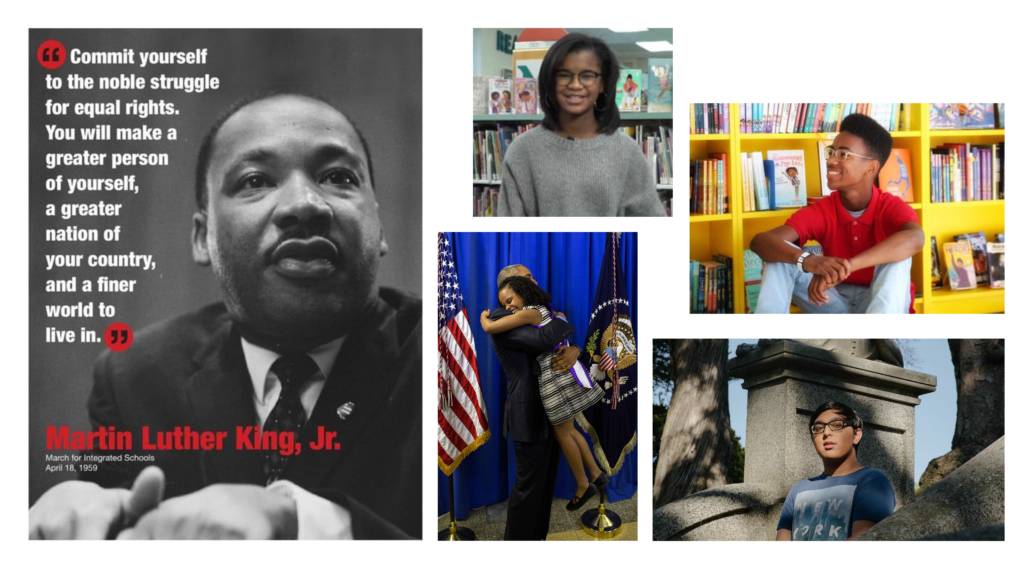


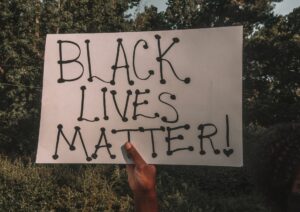 West Wind Education Policy is committed to disrupting historic and persistent inequities. We are deeply disturbed by the murders of George Floyd, Breonna Taylor, Ahmaud Arbery, and so many others, as well as the ongoing violence toward the bodies and spirit of people of color.
West Wind Education Policy is committed to disrupting historic and persistent inequities. We are deeply disturbed by the murders of George Floyd, Breonna Taylor, Ahmaud Arbery, and so many others, as well as the ongoing violence toward the bodies and spirit of people of color.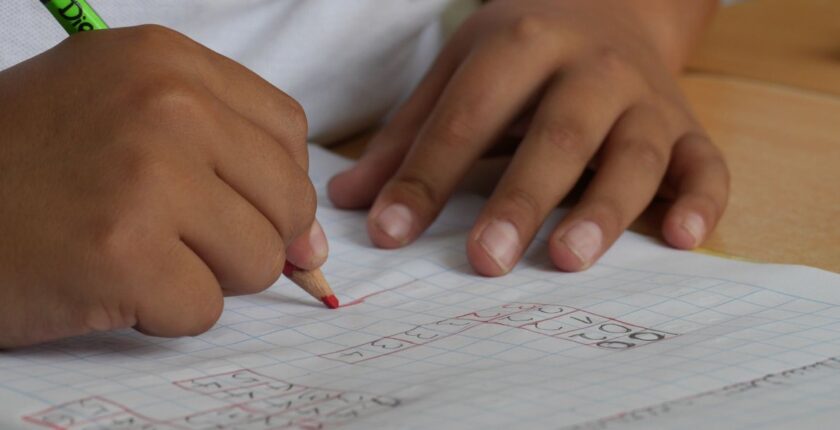
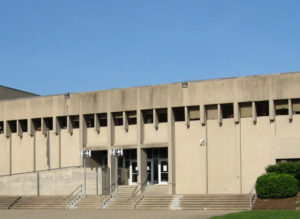 At West Wind, we are examining a relatively new concept: the “school to prison nexus.”
At West Wind, we are examining a relatively new concept: the “school to prison nexus.” Implicit Bias is more than just a hot topic that surfaced during the 2016 presidential campaign. Implicit bias is real and it negatively impacts the lives of marginalized individuals every day across our country. The Kirwan Institute at The Ohio State University defines implicit bias as ”[T]he attitudes or stereotypes that affect our understanding, actions, and decisions in an unconscious manner. These biases, which encompass both favorable and unfavorable assessments, are activated involuntarily and without an individual’s awareness or intentional control.”
Implicit Bias is more than just a hot topic that surfaced during the 2016 presidential campaign. Implicit bias is real and it negatively impacts the lives of marginalized individuals every day across our country. The Kirwan Institute at The Ohio State University defines implicit bias as ”[T]he attitudes or stereotypes that affect our understanding, actions, and decisions in an unconscious manner. These biases, which encompass both favorable and unfavorable assessments, are activated involuntarily and without an individual’s awareness or intentional control.”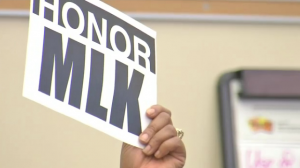 I hope you had a meaningful MLK Day yesterday! We are proud that our very own Alecia Brooks was honored yesterday at the 1st Annual Stride Toward Progress Bell Ringing and Awards Ceremony here in Iowa City. Royceann Porter, 2014-15 African American Achievement Award Recipient, took it upon herself to publicly acknowledge the hard work and spirit of service among black leaders in Iowa City. She identified over 150 community members to honor! We prepared certificates of acknowledgement and gratitude and Royceann worked with a local vendor to get T-shirts for all of the award recipients. It was inspiring to meet so many committed Iowa Citians!
I hope you had a meaningful MLK Day yesterday! We are proud that our very own Alecia Brooks was honored yesterday at the 1st Annual Stride Toward Progress Bell Ringing and Awards Ceremony here in Iowa City. Royceann Porter, 2014-15 African American Achievement Award Recipient, took it upon herself to publicly acknowledge the hard work and spirit of service among black leaders in Iowa City. She identified over 150 community members to honor! We prepared certificates of acknowledgement and gratitude and Royceann worked with a local vendor to get T-shirts for all of the award recipients. It was inspiring to meet so many committed Iowa Citians! 
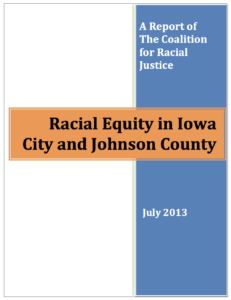 Download the report below:
Download the report below: